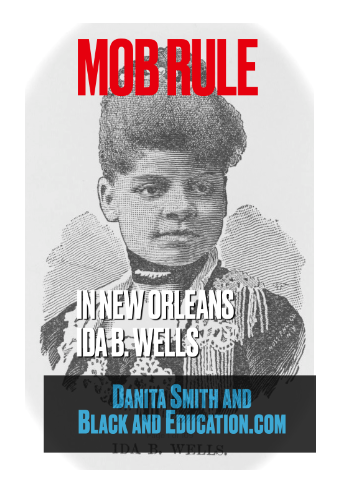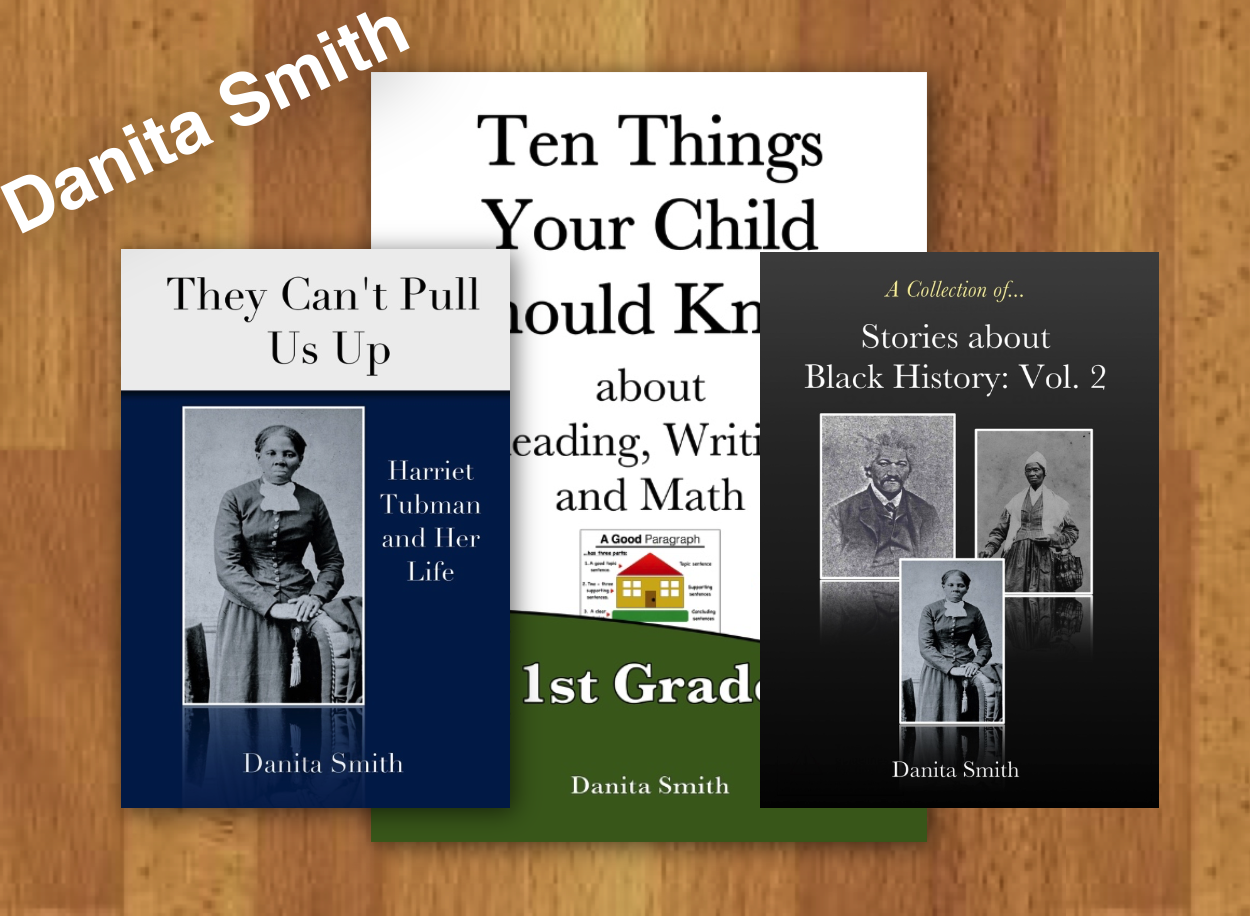Robert Charles and Mob Rule in New Orleans by Ida B. Wells
Excerpt from Mob Rule in New Orleans, 1900, by Ida B. Wells
These books are available here and on Amazon.
Check them out.
(Excerpt from Mob Rule in New Orleans, 1900, by Ida B. Wells)
The bloodiest week which New Orleans has know since the massacre of the Italians in 1892 was ushered in Monday, July 24, by the inexcusable and unprovoked assault upon two colored men by police officers of New Orleans. Fortified by the assurance born of long experience in the New Orleans service, three policemen, Sergeant Aucoin, Officer Mora and Officer Cantrelle, observing two colored men sitting on doorsteps on Dryades street, between Washington Avenue and 6th Streets, determined, without a shadow of authority, to arrest them. One of the colored men was named Robert Charles, the other was a lad of nineteen named Leonard Pierce. The colored men had left their homes, a few blocks distant, about an hour prior, and had been sitting upon the doorsteps for a short time talking together. They had not broken the peace in any way whatever, no warrant was in the policemen's hands justifying their arrest, and no crime had been committed of which they were the suspects. The policemen, however, secure in the firm belief that they could do anything to a Negro that they wished, approached the two men, and in less than three minutes from the time they accosted them attempted to put both colored men under arrest. The younger of the two men, Pierce, submitted to arrest, for the officer, Cantrelle, who accosted him, put his gun in the young man's face ready to blow his brains out if he moved. The other colored man, Charles, was made the victim of a savage attack by Officer Mora, who used a billet and then drew a gun and tried to kill Charles. Charles drew his gun nearly as quickly as the policeman, and began a duel in the street, in which both participants were shot. The policeman got the worst of the duel, and fell helpless to the sidewalk. Charles made his escape. Cantrelle took Pierce, his captive, to the police station, to which place Mora, the wounded officer, was also taken, and a man hunt at once instituted for Charles, the wounded fugitive.
In any law-abiding community Charles would have been justified in delivering himself up immediately to the properly constituted authorities and asking a trial by a jury of his peers. He could have been certain that in resisting an unwarranted arrest he had a right to defend his life, even to the point of taking one in that defense, but Charles knew that his arrest in New Orleans, even for defending his life, meant nothing short of a long term in the penitentiary, and still more probable death by lynching at the hands of a cowardly mob. He very bravely determined to protect his life as long as he had breath in his body and strength to draw a hair trigger on his would-be murderers. How well he was justified in that belief is well shown by the newspaper accounts which were given of this transaction. Without a single line of evidence to justify the assertion, the New Orleans daily papers at once declared that both Pierce and Charles were desperadoes, that they were contemplating a burglary and that they began the assault upon the policemen. It is interesting to note how the two leading papers of New Orleans, the Picayune and the Times-Democrat, exert themselves to justify the policemen in the absolutely unprovoked attack upon the two colored men. As these two papers did all in their power to give an excuse for the action of the policemen, it is interesting to note their versions. The Times-Democrat of Tuesday morning, the twenty-fifth, says:
Two blacks, who are desperate men, and no doubt will be proven burglars, made it interesting and dangerous for three bluecoats on Dryades street, between Washington Avenue and Sixth Street, the Negroes using pistols first and dropping Patrolman Mora. But the desperate darkies did not go free, for the taller of the two, Robinson, is badly wounded and under cover, while Leonard Pierce is in jail.
———
The next step in the terrible tragedy occurred between 2:30 and 5 o’clock Tuesday morning, about four hours after the affair on Dryades Street. The man hunt, which had been inaugurated soon after Officer Mora had been carried to the station, succeeded in running down Robert Charles, the wounded fugitive, and located him at 2023 4th Street. It was nearly 2 o'clock in the morning when a large detail of police surrounded the block with the intent to kill Charles on sight. Capt. Day had charge of the squad of police. Charles, the wounded man, was in his house when the police arrived, fully prepared, as results afterward showed, to die in his own home. Capt. Day started for Charles's room. As soon as Charles got sight of him there was a flash, a report, and Day fell dead in his tracks. In another instant Charles was standing in the door, and seeing Patrolman Peter J. Lamb, he drew his gun, and Lamb fell dead. Two other officers, Sergeant Aucoin and Officer Trenchard, who were in the squad, seeing their comrades, Day and Lamb, fall dead, concluded to raise the siege, and both disappeared into an adjoining house, where they blew out their lights so that their cowardly carcasses could be safe from Charles's deadly aim. The calibre of their courage is well shown by the fact that they concluded to save themselves from any harm by remaining prisoners in that dark room until daybreak, out of reach of Charles's deadly rifle. Sergeant Aucoin, who had been so brave a few hours before when seeing the two colored men sitting on the steps, talking together on Dryades Street, and supposing that neither was armed, now showed his true calibre. Now he knew that Charles had a gun and was brave enough to use it, so he hid himself in a room two hours while Charles deliberately walked out of his room and into the street after killing both Lamb and Day. It is also shown, as further evidence of the bravery of some of New Orleans' "finest," that one of them, seeing Capt. Day fall, ran seven blocks before he stopped, afterwards giving the excuse that he was hunting for a patrol box.
At daybreak the officers felt safe to renew the attack upon Charles, so they broke into his room, only to find that—what they probably very well knew—he had gone. It appears that he made his escape by crawling through a hole in the ceiling to a little attic in his house. Here he found that he could not escape except by a window which led into an alley, which had no opening on 4th Street. He scaled the fence and was soon out of reach.
It was now 5 o'clock Tuesday morning, and a general alarm was given. Sergeant Aucoin and Corporal Trenchard, having received a new supply of courage by returning daylight, renewed their effort to capture the man that they had allowed to escape in the darkness. Citizens were called upon to participate in the man hunt and New Orleans was soon the scene of terrible excitement. Officers were present everywhere, and colored men were arrested on all sides upon the pretext that they were impertinent and "game niggers." An instance is mentioned in the Times-Democrat of the twenty-fifth and shows the treatment which unoffending colored men received at the hands of some of the officers. This instance shows Corporal Trenchard, who displayed such remarkable bravery on Monday night in dodging Charles's revolver, in his true light. It shows how brave a white man is when he has a gun attacking a Negro who is a helpless prisoner. The account is as follows:
The police made some arrests in the neighborhood of the killing of the two officers. Mobs of young darkies gathered everywhere. These Negroes talked and joked about the affair, and many of them were for starting a race war on the spot. It was not until several of these little gangs amalgamated and started demonstrations that the police commenced to act. Nearly a dozen arrests were made within an hour, and everybody in the vicinity was in a tremor of excitement.
It was about 1 o'clock that the Negroes on Fourth Street became very noisy, and George Meyers, who lives on Sixth Street, near Rampart, appeared to be one of the prime movers in a little riot that was rapidly developing. Policeman Exnicios and Sheridan placed him under arrest, and owing to the fact that the patrol wagon had just left with a number of prisoners, they walked him toward St. Charles Avenue in order to get a conveyance to take him to the Sixth Precinct station.
A huge crowd of Negroes followed the officers and their prisoners. Between Dryades and Baronne, on Sixth, Corporal Trenchard met the trio. He had his pistol in his hand and he came on them running. The Negroes in the wake of the officers, and prisoner took to flight immediately. Some disappeared through gates and some over fences and into yards, for Trenchard, visibly excited, was waving his revolver in the air and was threatening to shoot. He joined the officers in their walk toward St. Charles Street, and the way he acted led the white people who were witnessing the affair to believe that his prisoner was the wanted Negro. At every step he would punch him or hit him with the barrel of his pistol, and the onlookers cried, "Lynch him!" "Kill him!" and other expressions until the spectators were thoroughly wrought up. At St. Charles Street Trenchard desisted, and, calling an empty ice wagon, threw the Negro into the body of the vehicle and ordered Officer Exnicios to take him to the Sixth Precinct station.
The ride to the station was a wild one. Exnicios had all he could do to watch his prisoner. A gang climbed into the wagon and administered a terrible thrashing to the black en route. It took a half hour to reach the police station, for the mule that was drawing the wagon was not overly fast. When the station was reached a mob of nearly 200 howling white youths was awaiting it. The noise they made was something terrible. Meyers was howling for mercy before he reached the ground. The mob dragged him from the wagon, the officer with him. Then began a torrent of abuse for the unfortunate prisoner.
The station door was but thirty feet away, but it took Exnicios nearly five minutes to fight his way through the mob to the door. There were no other officers present, and the station seemed to be deserted. Neither the doorman nor the clerk paid any attention to the noise on the outside. As the result, the maddened crowd wrought their vengeance on the Negro. He was punched, kicked, bruised and torn. The clothes were ripped from his back, while his face after that few minutes was unrecognizable.
Excerpt from:
Wells, Ida B., Mob Rule in New Orleans: Robert Charles and His Fight to Death, The Story of His Life, Burning Human Beings, 1900.

